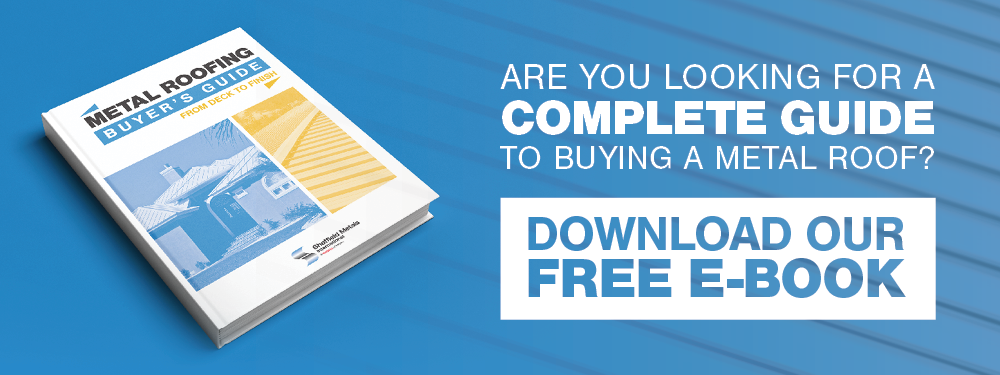We get a lot of questions about the different types of metal materials that can be used in metal roofing and wall systems. There is one question that comes up more often than others:
What is the difference between Galvalume® and galvanized metal?
These two metals, which are technically coatings applied to a steel core, aren’t all that different from one another by definition. However, the benefits and drawbacks of Galvalume and galvanized metal significantly differ, including how long each one lasts, the expectations of how each one will perform, and more.
While our main product focus at Sheffield Metals is painted or bare 24-gauge Galvalume coils and sheets used in the standing seam metal roof and wall industry, we sell galvanized metal products as well. In essence, we believe it’s important that you know the different attributes of these two materials so you can make the best choice for your project.
In this article, expect to learn:
- What is Galvalume?
- The pros and cons of Galvalume
- What is galvanized?
- The pros and cons of galvanized
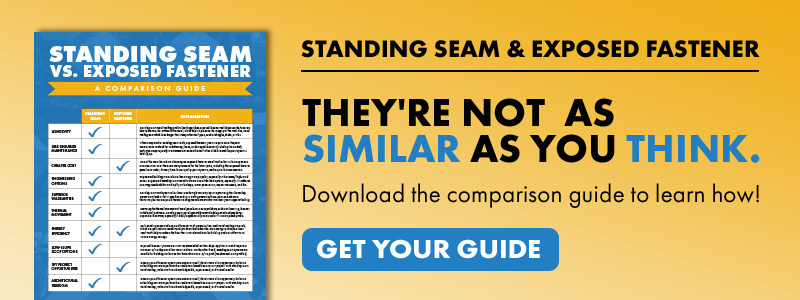
What Is Galvalume®? Definition, Uses, & Comparisons
Bethlehem Steel introduced the Galvalume coating to the construction industry in the early 1970s. Galvalume roofing material combines three of the most important metals used in roofing today—steel, aluminum, and zinc. Manufacturers begin with a carbon steel base sheet that is then continuously hot-dipped with aluminum and zinc alloys until it reaches a coating consisting of 55% aluminum, 43.4% zinc, and 1.6% silicone. This process allows for one material to have some of the best characteristics of each metal, which is why it’s become one of the most popular materials in today’s roofing market.
Galvalume is also referred to by its coating weights, AZ-50 and AZ-55. Here’s what these two terms mean:
- AZ-50 = 0.50 ounces per square foot of the aluminum-zinc alloy coating applied to both sides of the substrate.
- AZ-50 is the typical coating weight for painted sheet/coil products.
- AZ-55 = 0.55 ounces per square foot of the aluminum-zinc alloy coating applied to both sides of the substrate.
- AZ-55 is the typical coating weight for bare or unpainted (often called acrylic-coated Galvalume or Galvalume Plus) sheet/coil products.
- Acrylic-coated Galvalume has a slightly heavier coating weight and includes a light acrylic coating that protects the Galvalume coating in the manufacturing process. This acrylic coating will wear off over time with exposure. Though not painted, these products still need to be handled with care, or you risk scuffing or perforating the coating.
Uses for Galvalume® Metal Roofs & Walls
Overall, Galvalume is suitable as a roof, wall, trim, accent, and more in most building applications in some of the most extreme environments, including hurricane zones, locations with high rain or snowfall, high-temperature regions, and more.
Some common uses for Galvalume include:
- Commercial buildings – Hospitals, schools, stores, government buildings, and more
- Residential projects – Single-family, multi-family, condominiums, and more
- Architectural structures – Commercial, governmental, residential, and more
- Structural/industrial applications – Warehouses, factories, and more
- Agricultural – Non-animal confinement spaces, barns, storage, and more
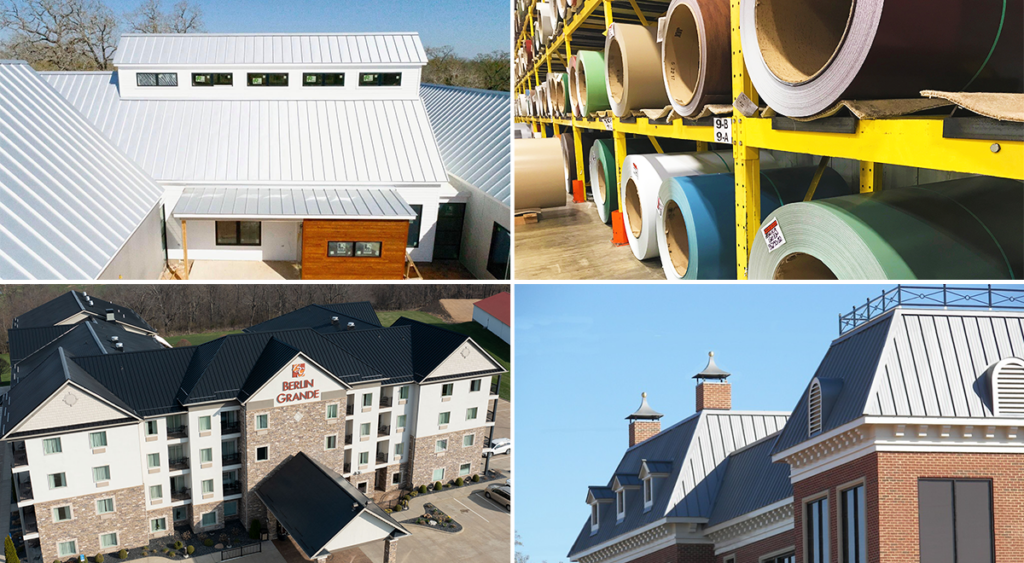
However, there are some situations where Galvalume is NOT recommended for use. In these situations below, the main concern is that the coating will prematurely break down and cause the roof or wall system to fail quicker than if it were not in that location. Here are some circumstances where Galvalume should not be used:
- Animal confinement buildings – Galvalume is not suitable for use on buildings where animals are regularly housed or held. Manure from the animals breaks down into ammonia gas over time and then reacts with the Galvalume coating. This process breaks down the Galvalume coating and leads to degradation of the metal. However, Galvalume is sometimes used on modern chicken houses that are built with a vapor barrier between the chicken area and the roof for appropriate ventilation. It’s best to check with the manufacturer before putting Galvalume on an animal confinement building, as it depends on the specific use.
- In coastal environments – The coating of Galvalume will not stand up to the conditions associated with a coastal environment, including properties up against breaking surfs, large bays, marshes, and other coastlines. Specifically, a large amount of salt (sodium chloride) will harm the Galvalume coating and prematurely degrade the roof or wall system. It’s recommended that properties within a certain distance of a coast use an engineered aluminum roof system, as aluminum resists corrosion and rusting from saltwater for much longer.
Advantages & Pros of Galvalume®
Warranties – One of the number one selling points of Galvalume is the 25.5-year warranty on the substrate, which is sometimes referred to as a perforation warranty. Galvalume systems also often come with paint warranties that further protect your investment and provide peace of mind that the roof or wall system will last. (Note: Substrate or paint warranties are NOT available for Galvalume products within 1,500 feet of a coast.) Plus, commercial property owners can buy a weathertight warranty for their Galvalume roofing structure, which ensures the roof was installed correctly and adheres to strict installation details.
Corrosion resistance – When compared to galvanized metal, Galvalume’s corrosion resistance is about two to four times better. Galvalume’s formula was designed to combine the toughness and strength of zinc with the rust resistance of aluminum. Research conducted by the Metal Construction Association (MCA) indicates that Galvalume roofing could last as long as 40 to 50+ years without any extreme signs of corrosion.
Self-healing properties – All steel-based products have some degree of edge creep from the exposed steel when the coil is cut, but it can be offset by hemming or touching up exposed edges with paint pens. An advantage of Galvalume that stems from this concept is the fact that it has self-healing characteristics that help control the red rusting at the cut/exposed edges. (Note: A small degree of red rusting at cut edges is normal, but with a Galvalume coating, the red rust will eventually stop.)
Economically priced – For the most part, Galvalume is reasonably priced and one of the more affordable metal materials available for roofing products. Depending upon the thickness, color, and quality of the desired Galvalume panels, pricing ranges anywhere from $5.00 to $15.00 per square foot. Keep in mind that in 2021 and 2022, steel prices are continually fluctuating, so the price can vary dramatically.
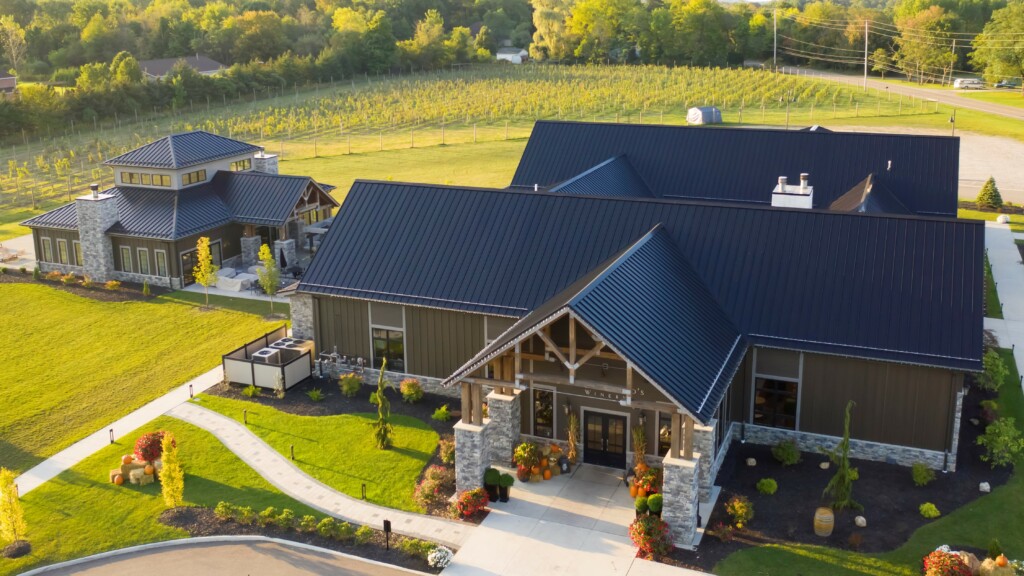
Disadvantages & Cons of Galvalume®
Oil canning – Oil canning is an inherent characteristic of light-gauge, cold-formed metal products, especially products with broad, flat areas. It’s a visual phenomenon seen as waviness or distortion in the flat surfaces of metal panels. Luckily, oil canning is only an aesthetic concern that doesn’t affect the performance of the roof system. This occurrence is possible with any metal roof or wall type, including Galvalume. However, there are methods to minimize the appearance of oil canning, including:
- Purchasing a thicker sheet or coil product (22 vs. 24 vs. 26-gauge).
- Buying trustworthy brands of coils and sheets.
- Rollforming panels with striations or bead stiffeners in the flat area of panels to minimize the appearance of oil canning.
- Hiring an experienced contractor who knows the best material handling and installation practices that help reduce oil canning.
- Ensuring there are no roof decking issues, as the metal will follow any inconsistencies on the deck.
- If the roof deck is not in plane, it’s best to fix it beforehand to reduce the risk of oil canning.
Interactions with other materials – Combining different metals on a metal roof system can actually lead to interactions that could result in early degradation, staining, and potential failure of a system altogether. Galvalume performs best when not in contact with copper, lead, bricks, treated lumber, iron, and concrete. If Galvalume is in contact with one of these and is then introduced to an electrolyte, such as water, it can lead to galvanic corrosion of the metal.
Unpainted Galvalume scuffing concerns – When installing a non-painted Galvalume, the acrylic coating on the top of the panels is susceptible to scuffing, especially in high-traffic areas. Once the coating is scuffed, there’s not much that can be done to fix the issue other than immediately replacing the scuffed panels. If scuffed unpainted Galvalume is left on the roof, it may become splotchy as the scuffed/exposed parts of the roof age and weather quicker. To avoid this issue, it’s important to limit foot traffic on installed panels and be aware of foot, boot, and ladder placement.
What Is Galvanized Steel? Definition, Uses, & Comparisons
Galvanized metal products have been around since the 17th century, but the process of “galvanizing” materials became a widespread practice in the early 19th century. Galvanization (commonly referred to as galvanized) is a protective zinc coating that is applied to a steel or iron substrate through a hot-dip galvanizing process. Before the introduction of Galvalume to the metal roofing industry in the late 20th century, using galvanized sheet and coil was a common practice. However, because of the superior durability and corrosion resistance of Galvalume, 90+ percent of the metal roofing and wall industry in the early 2000s transitioned from galvanized substrates to a Galvalume substrate.
Additionally, galvanized metal sheet/coil may also be called G-90, which refers to the coating weight.
Uses for Galvanized Metal Roofs & Walls
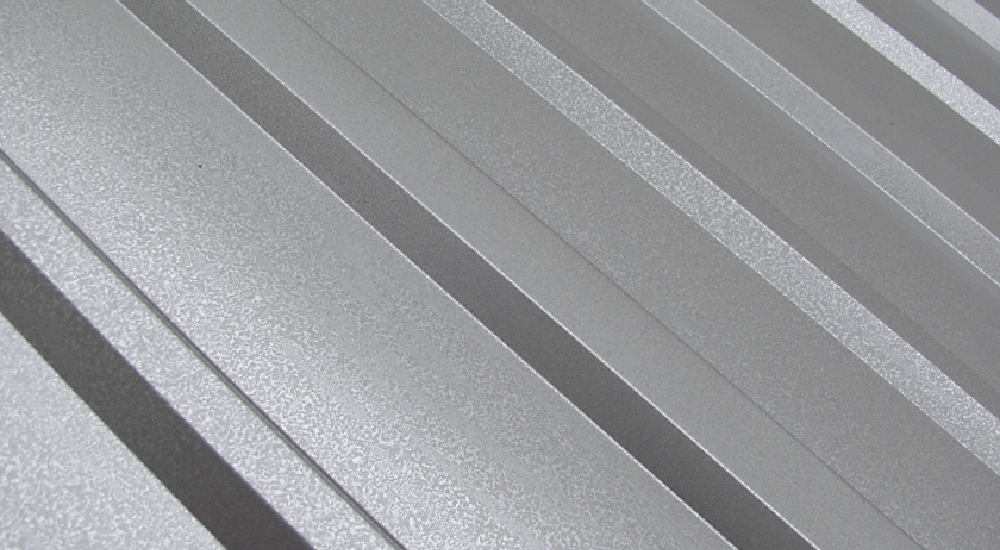
Galvanized metal is used in similar applications as Galvalume, especially for agricultural projects. However, the most significant thing to keep in mind is that galvanized is a little more challenging to find and might depend on what area your project is in (more details on that below). As mentioned, most manufacturers have stepped toward using Galvalume as the majority of their product offerings because it lasts longer and provides more benefits for property owners.
At Sheffield Metals, we do carry one product that has a galvanized substrate, Vintage® from Steelscape. To this day, Vintage is a popular sheet and coil, especially for architectural applications where an aged metallic look is desired.
Additionally, galvanized products will not stand up to the conditions associated with a coastal environment, including properties up against coastlines with breaking surfs, large bays, and marshes. Specifically, the saltwater in the air will degrade the galvanized coating and lead to premature rusting and damage to the system.
Advantages & Pros of Galvanized
Better suited for animal confinement – One of the most notable benefits of galvanized steel is that it can be used on structures that house animals. Galvalume is not suitable for animal confinement because manure from the animals breaks down into ammonia gas over time and then reacts with the Galvalume coating. However, an adequately ventilated galvanized roof system can perform well for several animal confinement applications. It’s best to check with the manufacturer before putting galvanized steel roof on an animal confinement building; plus, they might offer some specific design recommendations.
Better formability – Galvanized steel is more malleable than Galvalume, meaning that it will bend and form a little easier than other metal types. This is why galvanized is sometimes used more often in stamped metal shingles or stamped vent flashings, as galvanized allows for more concise bends.
Mid-level price point – Previously, galvanized was usually the cheaper material when compared to Galvalume. However, in the last 10+ years, the pricing of these two materials has fluctuated back and forth, but predictions in 2022 show galvanized material is now about 6% higher in price over Galvalume. Typical G-90 galvanized standing seam metal roofs cost anywhere from $8.00 to $16.00 per square foot and fluctuate further based on your location, the installer, the material color, thickness, and more. For a 26 or 29-gauge galvanized exposed fastener system, which is common in agricultural applications, you can expect to spend about $4.50 to $7.50 per square foot. Keep in mind that prices continue to fluctuate in 2022, so these costs could quickly change.
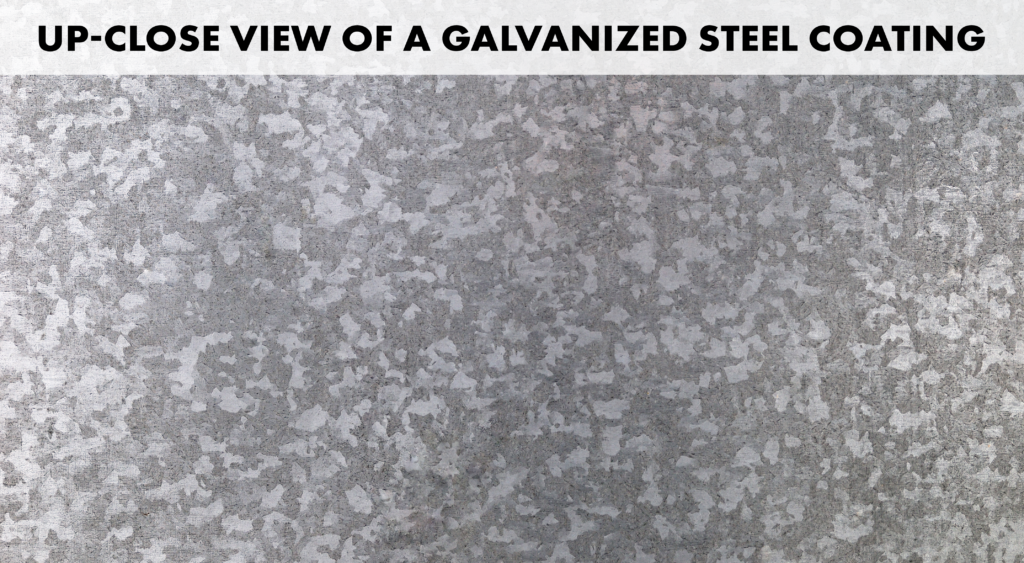
Disadvantages & Cons of Galvanized
No substrate warranties – Arguably the most significant disadvantage to galvanized metal systems is the fact that the substrate doesn’t have a warranty. Most galvanized systems have the potential to be unpredictable in specific environments and use, meaning that most manufacturers don’t offer warranties on most galvanized products.
Not self-healing & red rust – The zinc coating on galvanized sheet/coil does a good job protecting the steel core for the first decade or so of use. Though once any part of the steel core is exposed, the metal will start to red rust, which is both unsightly and will eat away at the metal over time. As we discussed, all steel products inherently have some degree of edge creep near cuts and exposed edges. The problem with galvanized metal (painted or not) is that once it starts to red rust, it doesn’t eventually stop as Galvalume does. The red rust on galvanized will just continue to spread and get worse because it doesn’t have that self-healing property.
Shorter longevity – Studies have shown that galvanized metal roofs will last around 15-20 years in the right environment. This may seem like a long time, but you would expect it to last as long if you’re spending the same amount or more for a galvanized roof than for a Galvalume roof. However, Galvalume roofs can last 40+ years, which is over double the lifespan of a galvanized roof.
Availability issues – When compared to Galvalume sheet and coil products, galvanized metal roofing products aren’t always as accessible. Galvanized is a very regional product, meaning that it’s easier to find and purchase in specific areas of the U.S., including those with a higher concentration of agriculture and animal confinement. Since Galvalume tends to perform better and lasts quite a bit longer, it’s easier to find and purchase nationwide.
Oil canning – Like Galvalume, galvanized metal can also develop oil canning in the flat areas of the panel.
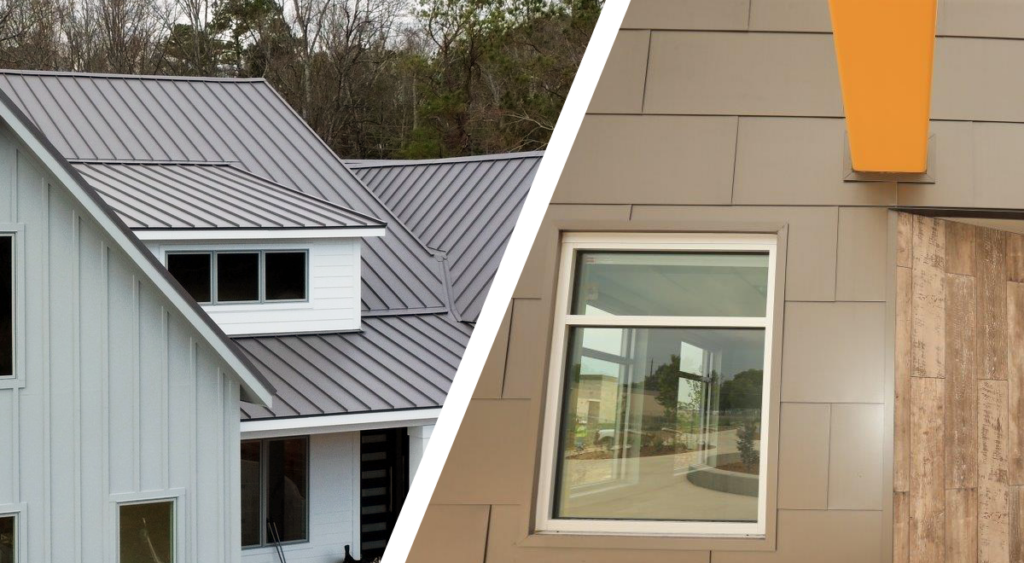
Final Thoughts on Galvalume® vs. Galvanized
Even though Galvalume and galvanized are generally similar in the way they’re created, they have different characteristics that affect how each one should be used in metal roof and wall projects.
Here’s a recap of what we discussed:
Galvalume is:
- An aluminum, zinc, and silicone coating is applied to the steel core via a hot-dipping process.
- Often offered with paint, substrate, and weathertight warranty options and has self-healing properties.
- Susceptible to oil canning, like galvanized metal.
Galvanized is:
- A zinc coating hot-dipped onto a steel core with origins dating back to the 17th century.
- Often not warrantied due to unpredictability and can develop excessive red rust when a core metal is exposed.
- Not likely to last more than 20 years, despite being more expensive than a 40+ year Galvalume roof.
At Sheffield Metals, we are dedicated to providing and educating our customers with the information they need to make the best and most informed decision. Contractors, architects, distributors, homeowners – we’re available to help with your metal roofing project.
Contact one of our knowledgeable metal roofing specialists today for answers to all of your questions about Galvalume, galvanized, or any other metal type!
